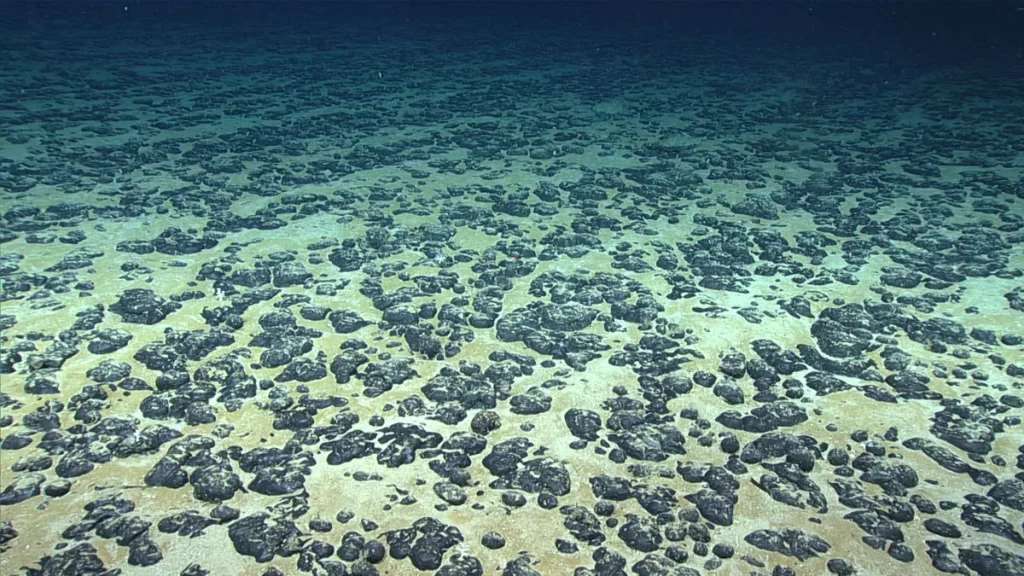Why in News?
- India has been allotted a site of 75,000 square kilometres in the Central Indian Ocean Basin (CIOB) by the International Seabed Authority (ISA) for the exploitation of Polymetallic Nodules (PMN).
For Prelims: Polymetallic Nodules, ISA
Polymetallic Nodules
- Definition: Polymetallic nodules, also known as manganese nodules, are rock concretions formed of concentric layers of iron and manganese hydroxides around a core.
- Formation: The core of a polymetallic nodule may be formed from the nucleus of a dead organism or some other debris.
- Location: These nodules are found scattered on the seafloor of world oceans in deep sea. Size: They vary in size from tiny particles visible only under a microscope to large nodules up to 20 centimetres across.
- Composition: Polymetallic nodules are rich in metals such as manganese, nickel, copper, cobalt, lithium, molybdenum, iron, and Rare Earth Elements.
- Potential Resource: They are considered valuable as potential resources for the future, providing a significant source of these metals without the environmental challenges of land- based mining.
- Extraction Challenges: The extraction of these nodules from the deep sea floor is a complex and potentially environmentally disruptive process.
- Regulation: The extraction process is subject to regulation by the International Seabed Authority to prevent potential environmental harm.

The International Seabed Authority (ISA)
- The ISA is an autonomous international organization established under the 1982 United Nations Convention on the Law of the Sea (UNCLOS).
- Headquarters: Kingston, Jamaica
- Its primary role is to organize, regulate and control all mineralrelated activities in the international seabed area beyond the limits of national jurisdiction, an area underlying most of the world’s oceans.
- It is also responsible for ensuring the protection of the marine environment from harmful effects that may arise from such activities.
